How to Make Your Room Aesthetic and Cozy
- Urbane Team

- Sep 3
- 11 min read

Your room is more than just four walls. It’s the place you laugh, dream, and escape the world. Yet, when it feels dull or cluttered, it quietly drains your energy. The truth is, anyone can buy furniture, but making a space both beautiful and livable is a skill. However, the good news is that you don't need a professional designer or a huge budget. With just a few mindful touches, you can make your room aesthetic while keeping it cozy.
Definition of Aesthetic vs. Cozy Design Principles
Aesthetic design is about the deliberate visual choices you make. It's the architecture of your room's style, focusing on things like color palettes, furniture shapes, and how patterns and textures create a cohesive, eye-catching look. It's about crafting an initial visual impact, the "wow" factor.
In contrast, cozy design is about the emotional experience of the space. It's the feeling of warmth and comfort, built with soft lighting, plush textiles, and personal items that tell your story. A cozy room feels lived-in and inviting, a place where you can genuinely relax and be yourself.
Both principles speak a different language, one to your eyes, the other to your heart.
Why Combining Both Creates the Perfect Personal Sanctuary
Now, imagine there's a room that’s only aesthetically appealing and can often feel like a showroom i.e. picture-perfect, but too pristine to truly live in. While you'll admire it, but you hesitate to relax. On the other hand, a room that’s only cozy may feel warm and inviting but lacks that visual structure that makes it inspiring. It can easily slip into looking cluttered or mismatched.
When the two are combined, the result is a sanctuary one that balances beauty and comfort. Like a neatly styled bed layered with soft throws. A reading nook where clean-lined furniture is paired with a lamp that casts a warm glow. A color palette that is pleasing to the eye, yet softened by natural textures like wood, cotton, or linen. This union of principles gives you the best of both worlds, a room that not only photographs well but also feels like the one place you never want to leave.
10+ Pro Tips to Create a Cozy and Aesthetic Room (DIY & Design Ideas)
Designing your room is not about rigid rules; it’s about blending inspiration with intention. Each of the following tips is crafted to help you strike that balance between beauty and comfort.
Whether you’re working with a compact bedroom or a spacious living area, these ideas are flexible, practical, and easy to adapt to your style. Think of them as stepping stones that guide you toward a room that feels both picture-perfect and deeply personal.
Tip 1: Maximize Natural Light for an Airy Aesthetic
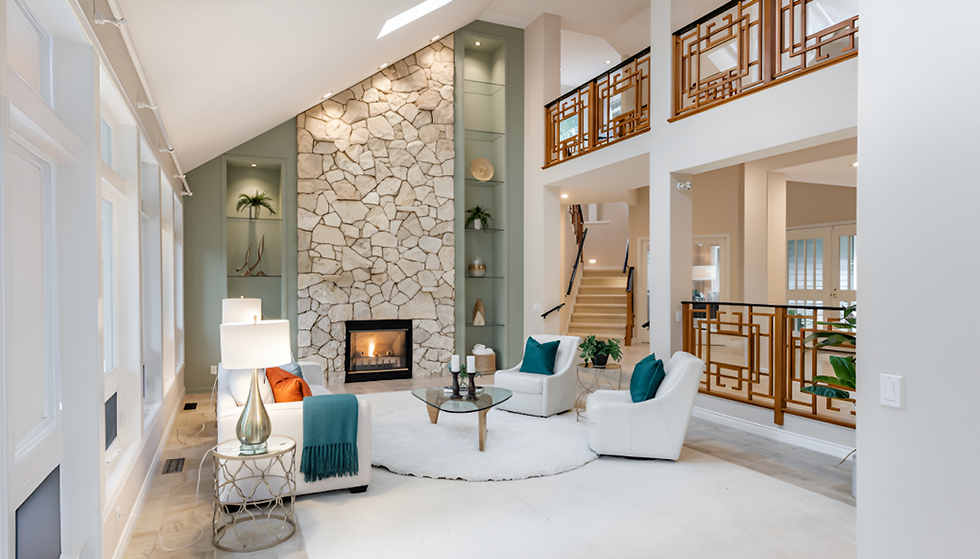
Natural light is one of the simplest ways to transform a room, yet it’s often overlooked. Sunlight makes colors look richer, walls appear brighter, and spaces feel larger. Unlike artificial lighting, it shifts with the day, like soft and golden in the morning, sharp and energizing at noon, and calming by evening. If your room feels dim, start with the windows. Swap heavy drapes for sheer curtains that let light in while maintaining privacy. Place mirrors opposite or adjacent to windows to bounce light around the room, instantly making it look more spacious. Even rearranging furniture, like moving your reading chair closer to a window, can make a world of difference.
Tip 2: Maintain Balance and Flow in Your Space

A beautiful room isn’t built by filling every corner; it's shaped by balance. Instead of adding more, great design is about knowing when to edit, allowing the eye to move smoothly and purposefully across the space. Think of your room as a conversation where every element has a voice. When one element dominates, the dialogue feels jarring; a balanced room feels intentional and harmonious.
Balance isn’t just about symmetry. It's about visual weight. For example, a large bed can be balanced by a hefty bookcase or a comfortable armchair, ensuring the room feels stable rather than lopsided. The bed might be the centerpiece, but it shouldn't overshadow the supporting cast of side tables, a rug, or a quiet reading nook. Every piece should complement the others, not compete for attention. In this dynamic, negative space becomes crucial. It's the breathing room between furniture and textures that allows each design element to stand out on its own.
Flow, on the other hand, is about movement, the invisible path that guides you through the room. Furniture should encourage this ease of passage, not obstruct it. Avoid placing large pieces in the middle of natural walkways, and make sure there's enough space to move around the bed, glide past the sofa, or comfortably reach a favorite corner. When balance and flow work together, your space feels effortlessly curated, welcoming, and naturally livable.
Also Read: Why Pinterest Inspired Spaces Don't Always Work.
Tip 3: Choose Colors That Make a Room Aesthetic
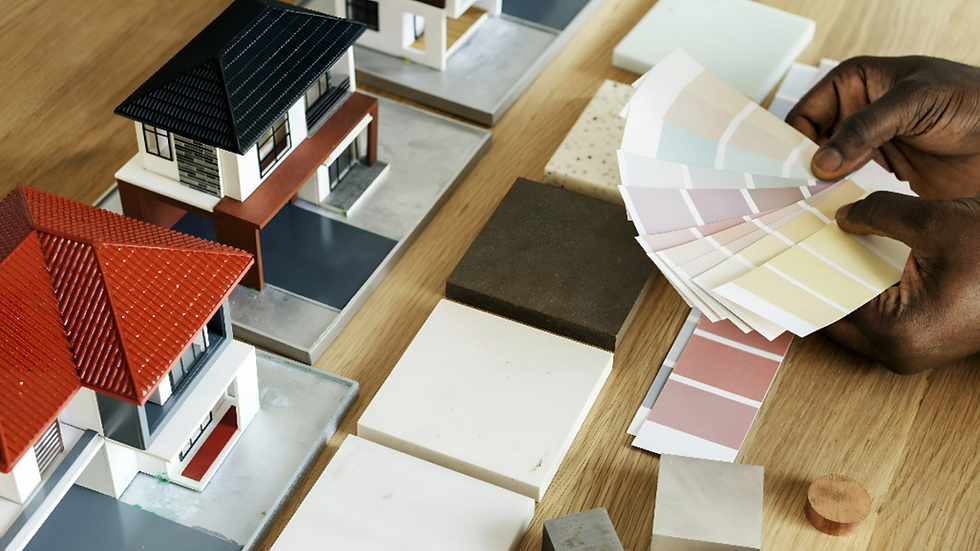
What’s the first thing you notice when you walk into a room? The color. It's the silent narrator of your space, setting the entire mood before a single word is spoken. While furniture and décor are important, a mismatched or poorly chosen color palette can completely undermine your efforts. So, how do you get this right?
First, understand the psychology of color. Aesthetic design often leans on a cohesive, deliberate palette. A monochromatic scheme, using different shades of the same color, creates a sophisticated, seamless look. Alternatively, a complementary palette, using colors from opposite ends of the color wheel, can create a striking, energetic contrast. The key is to be intentional.
But to make it cozy, you need to layer. An all-white room might be aesthetic, but it can feel sterile. To introduce warmth, soften it with natural, earthy tones. Think about using a neutral base like warm whites, beiges, or light grays, and then building on it with pops of color in your textiles and accessories. A deep green throw on a light gray sofa or a terracotta vase on a wooden shelf. These small additions don't just add visual interest; they make the room feel lived-in and inviting. It's the difference between a magazine spread and a home. The right colors, thoughtfully combined, don't just decorate a room; they breathe life into it.
Tip 4: Layer Textures and Fabrics for Warmth

Creating a cozy and inviting space goes beyond just picking the right colors and furniture; it's also about incorporating texture. A room that lacks texture can feel flat and sterile. The key to a truly comfortable space is a tactile experience, which you can achieve by layering a variety of fabrics and materials to add depth and warmth.
Think of it like creating a lush garden. You don't just plant a single type of flower. Instead, you layer different plants to create visual interest. You can apply the same principle to your home. For example, when building a gallery wall, combine black and white photographs with vintage mirrors and a woven tapestry instead of using just one type of frame. This mix isn't only visually appealing; it also makes the space feel more personal.
Beyond the walls, you can introduce varied textures through other elements. A jute rug can add a rustic feel, while a faux fur throw creates instant comfort. Consider adding wicker baskets for storage, a wooden tray on your coffee table, or a ceramic vase with dried flowers. These thoughtful choices of fabrics and materials add a sensory richness that transforms a simple room into a warm, lived-in space.
Tip 5: Add Soft Furnishings for a Cozy Look

Soft furnishings are the quiet magic that turns a stark space into a welcoming retreat. More than decoration, these layers and textures soften the hard edges of modern life. They create a shift in mood, like a room you don’t just admire, but one you sink into and truly feel.
Think of your sofa as the stage and pillows as the supporting cast. Matching sets fall flat; instead, mix shapes, sizes, and fabrics for visual depth. A solid base layered with a bold print or a cozy knit adds character while doubling as an open invitation to relax. The same goes for rugs. A bare floor echoes with emptiness, but a plush rug grounds the room, absorbs sound, and adds warmth underfoot.
Curtains complete the picture. Forget the basics; floor-length drapes elevate your windows, bringing in both softness and quiet elegance. Together, these elements aren’t just finishing touches. They’re the essential layers that transform a space from functional to soulful, from house to home.
Also Read: How Smart Workspace Design Boosts Productivity.
Tip 6: Create Eye-Catching Focal Points
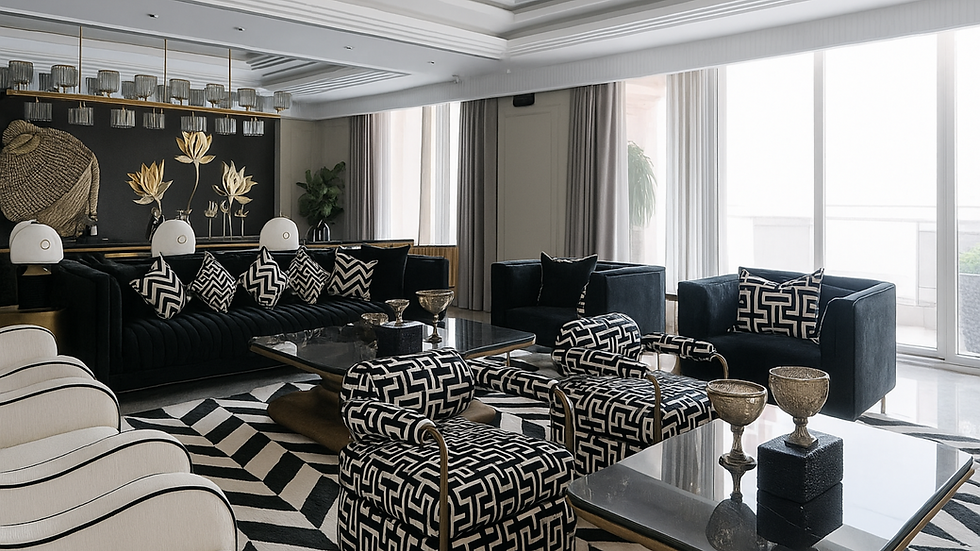
A well-designed room needs a focal point, something that catches the eye and gives the space its purpose. This central feature anchors the entire design, turning a random collection of objects into a cohesive and intentional space. Think of it as the main character of the room's story.
You can use an existing feature like a large window or a fireplace as your focal point. If your room lacks one, create it. A well-curated gallery wall, a single oversized piece of art, or a unique piece of furniture like a bold armchair or a striking light fixture can all serve this purpose. The key is to choose something that commands attention without overpowering the space.
Once you establish a clear focal point, the rest of the room's elements, from furniture placement to decor, will fall into place around it, creating balance and flow. This makes your space feel not only organized but also unique and compelling, reflecting your personal style and giving it a true sense of identity.
Tip 7: Invest in Quality Bedding for Comfort and Style

We spend nearly a third of our lives in bed, yet for many, it remains one of the most overlooked corners of the home. People will splurge on a sofa they use for just a few hours but settle for stiff, scratchy sheets. This isn’t merely a comfort issue; it’s a design one. The bed is the largest piece of furniture in your room, and its presence sets the tone for the entire space.
Think of it as your bedroom’s true statement piece. The elegance lies in the crisp lines of a neatly made bed, the thoughtful layering of duvets and throws, and the visual harmony of colors and textures. Done right, it doesn’t just look inviting; it transforms the room into something that feels polished, intentional, and magazine-worthy.
Ultimately, coziness comes down to quality. It’s that sense of sinking into bedding that feels truly luxurious. Investing in natural fibers like linen or high-thread-count cotton pays off not only in aesthetics but also in comfort that deepens with every wash. These tactile choices bring warmth, breathability, and softness that no superficial decor can rival, seamlessly blending function and beauty to create a true sanctuary.
Tip 8: Bring Nature Indoors With Plants
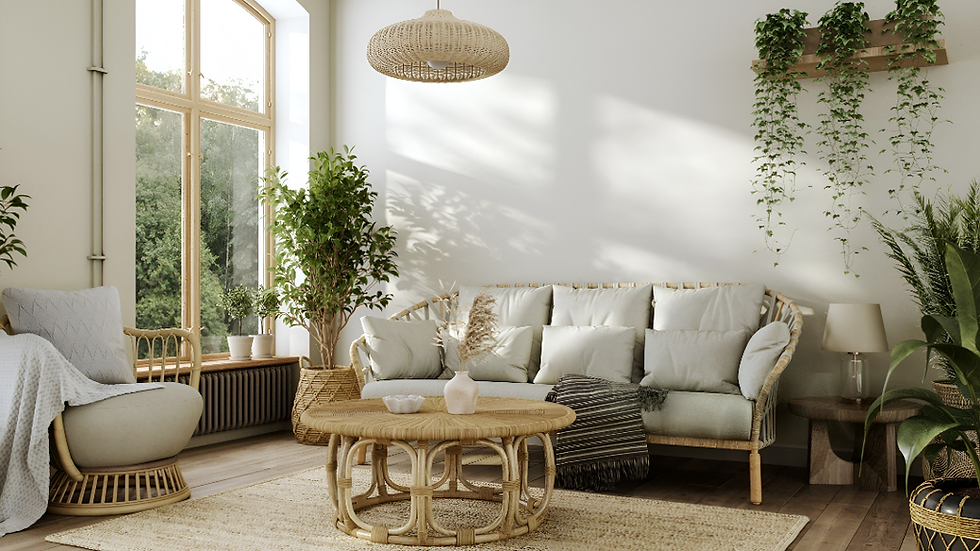
For years, plants were treated as little more than fillers, something to occupy an empty corner. However, that’s a mistake. Welcoming nature indoors is one of the simplest and most powerful ways to transform a room from sterile and static into warm, alive, and inviting.
Visually, nothing compares to greenery. Plants soften rigid lines and inject color and texture in ways furniture alone never can. A tall, leafy palm can instantly become a striking focal point, while a cluster of succulents or trailing vines adds layers of depth and charm. They are living sculptures, evolving with your space, creating an energy and dynamism no static artwork could match.
Yet their real magic lies beyond aesthetics. Plants don’t just decorate; they nurture. They remind us of our bond with nature, improve air quality, ease stress, and breathe life into urban interiors. A plant is not just an object; it’s a quiet companion that radiates calm and presence.
So, when you’re choosing your next decorative touch, skip the inanimate trinket. Bring home a plant, and you’ll be investing in both the beauty of your space and the serenity of your mind.
Tip 9: Cozy and Aesthetic Storage Ideas

Clutter is the quiet enemy of a room’s aesthetic. It doesn’t just look untidy; it brings in a sense of chaos that undermines any effort to create comfort or serenity. You might invest in stunning furniture and a soothing color scheme, but if surfaces are crowded with random objects, the space will never truly feel like a sanctuary. The goal isn’t about going ultra-minimal; it’s about finding storage solutions that are as stylish as they are practical.
The secret lies in weaving storage into your design instead of tucking it away. This is where functionality meets coziness. Swap out sterile plastic bins for woven baskets that hold blankets or a beautifully crafted wooden chest for books. These pieces don’t just store; they layer in texture, warmth, and visual interest, making organization feel like part of the decor.
And don’t forget the vertical dimension. Floating shelves can double as display space for curated objects while discreetly hiding what you’d rather not show. A thoughtfully arranged bookshelf can even become a statement piece, whether styled by size, color, or content. When storage becomes a feature, your room naturally feels calmer because everything has a place. And when everything has a place, your space transforms into more than just organized; it becomes a retreat.
Tip 10: Pay Attention to Room Scent and Ambience
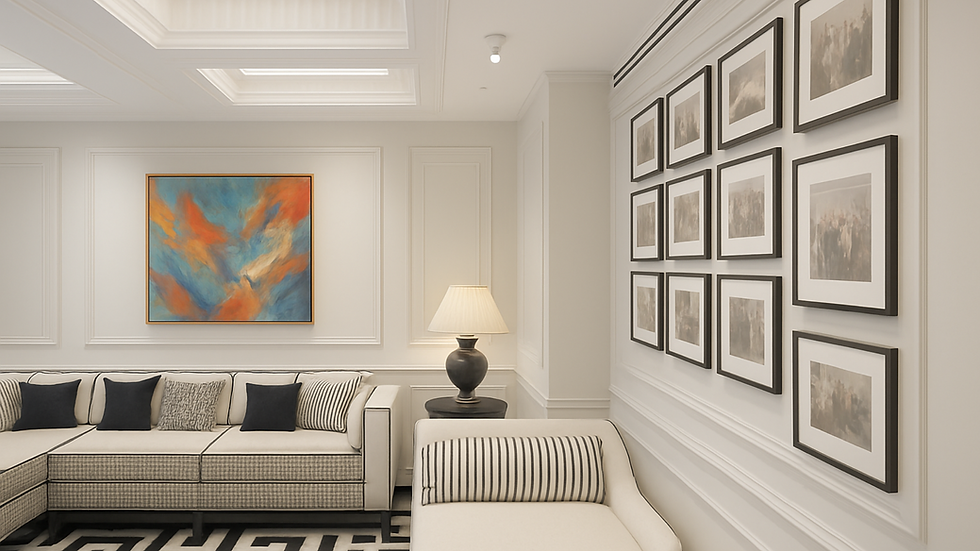
In interior design, our attention often lingers on what we can see and touch. Yet two invisible forces, scent and sound, quietly shape how a space feels. A room may be visually breathtaking, but if it carries a stale odor or is drowned in harsh noise, it will never become a true sanctuary. Designing with the senses means moving beyond the eyes and engaging the whole self.
Let’s start with scent. Fragrance is a room’s silent signature, capable of transforming how we experience it. The right aroma makes a space feel clean, warm, and welcoming, turning four walls into a home. Diffusers, candles, or a simple bowl of potpourri can work wonders. Choose fragrances that match your intention: lavender for calm, citrus for vitality, and sandalwood for grounding. This isn’t just about masking unpleasant odors; it’s about curating a mood that tells your mind to slow down and breathe.
Then comes the sound. The noises that surround us profoundly influence our emotions. A room filled with echoes or street clamor feels restless, while softened acoustics create comfort. Rugs, heavy drapes, or textured wall hangings can absorb excess noise, wrapping the space in quiet. Beyond silence, you can weave in intentional sounds like a gentle fountain, the crackle of a fireplace, or soothing background music. These layers don’t just fill the air; they create atmosphere. When sight, scent, and sound work in harmony, a room evolves from beautiful to deeply restorative.
Tip 11: Aesthetic DIY Room Decor Ideas

DIY isn't just a trend; it's a statement. It's the rejection of the cookie-cutter, mass-produced aesthetic in favor of something with personal meaning. For a room to be truly cozy, it must tell your story, and there's no better way to do that than by creating things with your own hands. This isn't about being a professional artist; it's about a mindful touch that makes your space uniquely yours.
From a design perspective, handmade items add a layer of authenticity that store-bought decor can never match. Think about a macrame wall hanging. The intricate knots and soft texture introduce a bohemian, natural element that instantly softens a wall. Or consider a set of framed postcards from your travels. They're more than just pictures; they're memories that make your room a personal gallery.
The beauty of DIY is that it doesn't require a large budget. You can turn something ordinary into something extraordinary. An old glass jar becomes a unique vase for dried flowers. A collection of small, mismatched mirrors can be arranged to create a dynamic, eye-catching feature. These projects are about investing a piece of yourself into your living space, making it a reflection of who you are.
Bring Your Dream Room to Life
Transforming your room into a space that is both aesthetic and cozy is a deeply personal and rewarding journey. It's about more than just following trends; it’s about curating an environment that reflects who you are and supports your well-being. Now that you have the tools and inspiration, it's time to make your room aesthetic and cozy. What's one small change you can make today to start bringing your dream room to life?

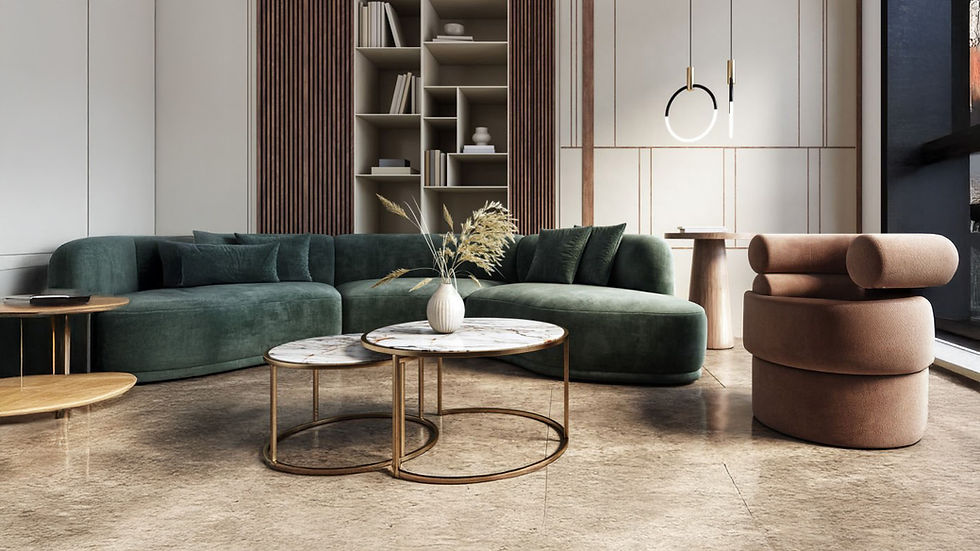

Comments